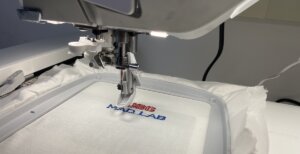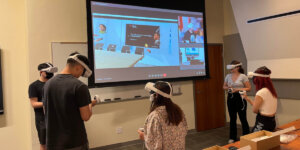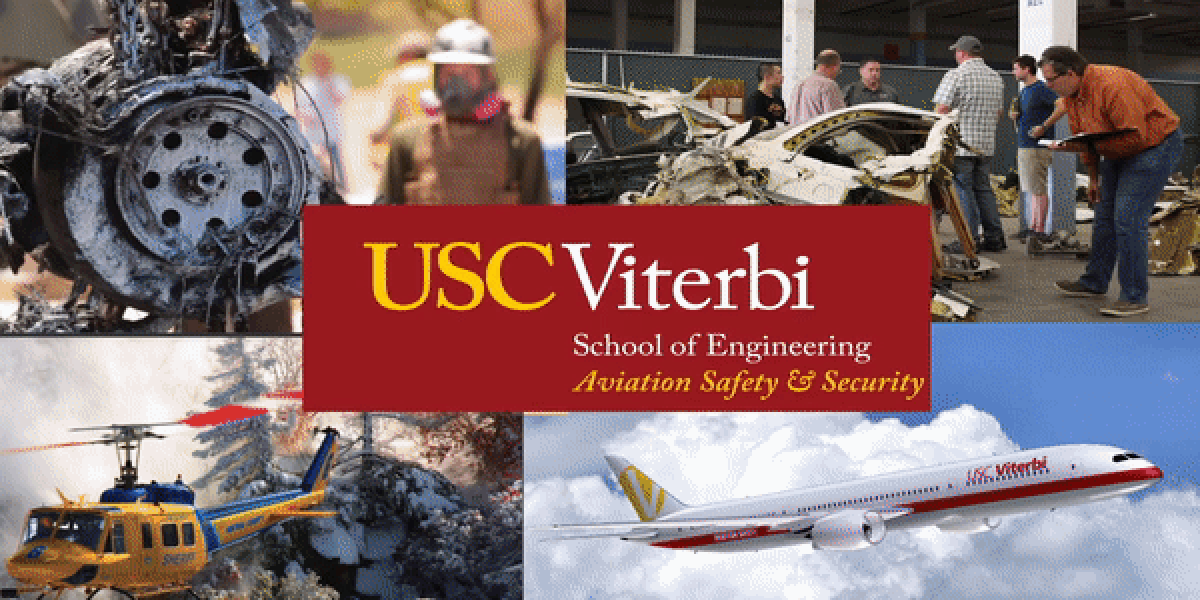
USC Safety and Security Program
The year was 1952 when the first class entered the USC Aviation Safety and Security Program.
It was a time when airline passengers were served dinner, drinks and cigarettes in their unbelted seats before giving a relieved round of applause once a pilot managed to safely land a plane.
In 1952, aviation safety looked completely different than what it does today. In that year alone, there were at least six major airplane crashes in the U.S., including the crash of a C-124 military aircraft in Moses Lake, Washington that killed 87 people on board, becoming the world’s deadliest aviation disaster at the time.
“It was the first program of its kind that existed and was created at a major research university in the world. We still maintain our status as the gold standard of aviation education.” — Thomas Anthony, director of the USC Aviation Safety and Security Program
In the New York – New Jersey metropolitan area, a series of crashes in 1952 led officials to temporarily close Newark Airport for nine months as President Truman established an Airport Commission, entitled “The Airport and Its Neighbors,” to study the nation’s policy on airport locations and the safety of communities within close proximity.
The huge loss of aircraft and military personnel experienced by the United States Air Force in the years following World War II prompted military officials to take action. Air Force commanders at Norton Air Force Base in San Bernardino were urged to establish a training center to prevent aircraft accidents and teach officers how to scientifically investigate a crash. Because the University of Southern California had previously conducted aeronautical research with the military, was equipped with the latest cutting-edge aviation technology of the time and was located in the heart of the aircraft industry, USC was selected to perform this task.
Thus, on September 1, 1952, the USC Aviation Safety and Security Program was born.
“It was the first program of its kind that existed and was created at a major research university in the world. We still maintain our status as the gold standard of aviation education,” said Thomas Anthony, the director of the USC Aviation Safety and Security Program and a former investigator for the Federal Aviation Administration.
“We put together a multidisciplinary team of professors from engineering, psychology, management, and communications to prepare these courses of studies with a wide range of courses that was provided to the flying squadron officers of the (U.S.) Air Force.”
Originally, the certificate program was offered solely to train U.S. military personnel, but over the last 70 years it has grown to educate more than 10,000 aviation professionals from around the world. Both foreign and domestic government officials, aircraft operators, manufacturers and accident investigators are among the wide variety of aviation professionals who have earned a certificate from the program.
Today, according to the Dutch aviation consulting firm To70, commercial passenger jets see just one fatal accident for every 16 million flights. To put that in perspective, for every 1 billion passenger miles traveled by car, 7.2 people die; by plane, it’s 0.07 people.
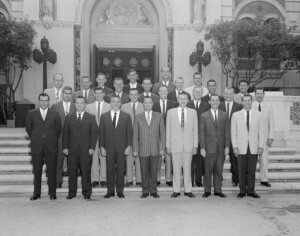
U.S. Navy recipients of the USC Aviation Safety and Security Program certificate in 1961
Some of the program’s most notable graduates include Jim Lovell, the astronaut who commanded NASA’s Apollo 13 mission and became one of the first people to ever travel to the moon, and Charles Bolden, the 12th Administrator of NASA who piloted both the space shuttle Columbia and Discovery missions.
Recently, Nivedita Bhasin, another USC certificate recipient, was named Air India’s chief of flight safety, the first female pilot to hold that position.
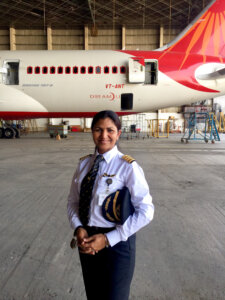
Air India Captain Nivedita Bhasin
“We have people coming from all around the world, from Europe, from Africa, from the Middle East, from Asia, who come to study in order to improve the safety of their operations,” said Anthony, who recalled a time when he got a call from Namibian crash investigators.
“They asked for our help in a potential pilot murder-suicide case because they had attended our courses. This is not only a benefit to them, but it’s a benefit for us as a program as we create a collaborative safety culture that shares data and resources around the world. It is recognized that the persons who have earned the certificate are experts in aviation safety and security.”
The USC Aviation Safety and Security certificate is recognized internationally by the International Federation of Airline Pilots Association. While several other aviation safety programs have been created across the country, Anthony says, none offer the same breadth of courses and international connections as the USC Aviation Safety and Security Program.
“It is a wide-ranging program with over 60 instructors who have practical, professional experience in each one of their given fields,” Anthony explained. “Our course offerings extend from safety management and accident investigation to safety management for drone operators and automated information for system safety, all the way to engineering safety.”
Students who take the program’s Aircraft Accident Investigation Course are offered much more than just classroom instruction thanks to access to the USC Aircraft Accident Investigation Lab located in Alhambra.
As an aviation accident investigator, an important component of the job is learning how to properly analyze wreckage before reaching a conclusion. The lab offers students hands-on learning opportunities and practical exercises with the wreckage of at least 13 aircraft available for close examination.
“The fact is that we are helping to prevent accidents like we have in our lab,” said Anthony. “One of the most difficult things about aircraft accident investigation is learning the discipline of it. The discipline is to observe, document and plan. When you’ve collected the evidence, let the evidence take you by the hand and lead you to the answer while resisting human nature to prematurely make conclusions.”
As technological breakthroughs continue to push the aviation industry ahead, airline safety has drastically improved since 1952. According to the FAA, over the past 20 years alone commercial aviation fatalities have decreased by 95 percent. The USC Aviation Safety and Security Program has contributed to those industry improvements by continually evolving how it approaches safety with the goal of providing certificate recipients with the highest quality aviation education experience.
Whether it’s creating courses on drones and AI in aviation or working with the U.S. Space Force, Anthony says the program is constantly looking for the next challenge in aviation so that the next 70 years are just as impactful as the last 70 years.
For more information on how you can get involved in USC’s Aviation Safety and Security Program click here.
Published on August 18th, 2022
Last updated on June 15th, 2024





